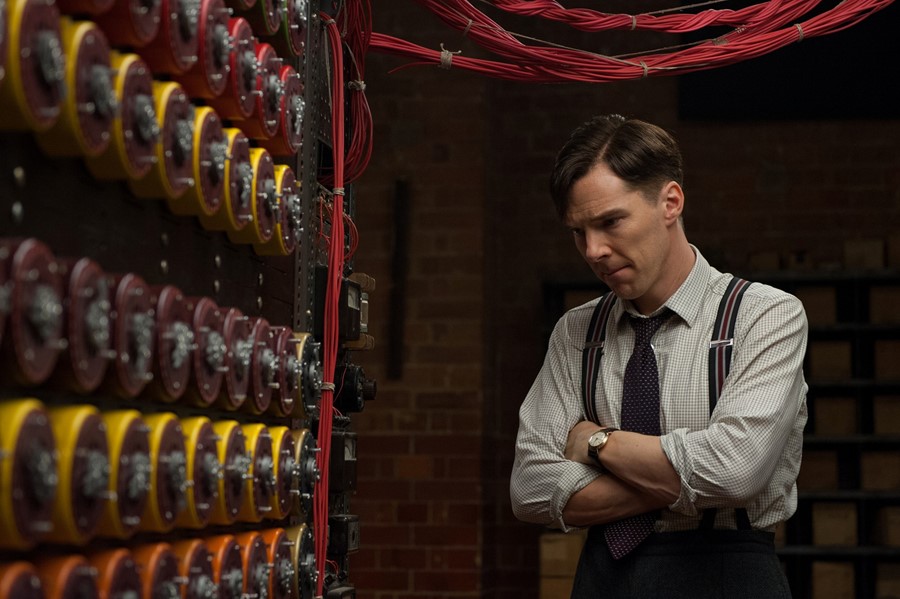Rethinking Complex Problems: The Need for Deeper Analysis

Image credit: The Telegraph
Having information does not necessarily dictate understanding. Your quality of thinking and how deep of a thinker you are does.
Thinking is at the center of our being and deeper thinking leads to deeper living while shallow thinking leads to a superficial life.
The problem is that we are not taught how to think: it is a skill that we are expected to know without much instruction.
Daniel Kahneman, in his book, Thinking Fast and Slow, posits that we use two primary modes of thinking in order to process information and make decisions – System 1 and System 2.
System 1 is intuitive, unconscious, instant, automatic and emotional while System 2 is slow, rational, reasoning, conscious, reflective and deliberate.
Our active thoughts and actions vary depending on what mode is running. Slow, deliberate, logical and focused thinking is often used in solving complex problems. That type of thinking – deliberate thinking – is more reliable but we don’t usually stop to reflect and make slow decisions because our responses are automatic.
Because of that, we need to hone our thinking skills.
Let’s go over what exactly it takes to think deeply about complex problems; and the multiple levels of thought that are involved.
Shallow vs. Deliberate Thinkers
Most our decisions in life are administered by our life experiences or the mental models we develop over the years (how we have been taught to think at home and at school). That is how we make sense of the world we live in.
Would you agree that we understand the world by building a model of it in our minds? When we are trying to figure out how to act, we can act out a situation by running it through the model. It’s like a mockup of the world in our brain. Instead of thinking quickly, we use mental models to evaluate every situation before making a decision.
 Image credit: Harvard Business Review
Image credit: Harvard Business Review
The problem arises when we limit ourselves to just that thought process. That is what shallow thinkers do.
Shallow thinkers do not think beyond the immediate and the observable. They usually take information at face value and only look at immediate consequences.
They are not capable of looking at all sides of an issue or think deeply about the issue before making decisions or drawing conclusions – they solve a problem with one solution. And they typically believe they are right.
They also believe that their opinion is based on deep thinking because they genuinely believe that their opinion is based on truth and facts.
Whereas, deep thinkers look at the whole sequence of events and the consequences.
When we dig deeper, we understand better. We can compare different outcomes, examine, tear apart, and make cognizant judgments that are derived from different mental models.
Think of it this way:
When you read a book once, you will probably have a shallow understanding of the book, just scratching the surface.
When you read it multiple times, take notes and summarize concepts, you will understand the ideas and themes better and more deeply. And you will tackle several problems with multiple approaches.
Now, let’s take a look at multiple level thinking.
Multiple Level Thinking
Multiple level thinking was made popular by David Sklansky in his book, No Limit Hold ‘em: Theory and Practice. It defines the multiple levels of thought of poker players during a game. (Deep thinking is common among poker players.)
Level 0: No thinking.
Level 1: What do I have?
Level 2: What do they have?
Level 3: What do they think I have?
Level 4: What do they think I think they have?
Level 5: What do they think I think they think I have?
Thinking in levels can exhume flaws in our decision-making processes, enabling us to make decisions with minute or no blind spots. And we all know that in life, and in business, the person with the fewest blind spots wins.
When you think in levels, you gather pieces of information to analyze, understand and confirm before you reach conclusions or a decision. Indeed, multiple level thinkers analyze information in its sum whilst considering its various parts. They fuse each piece to form a whole.

Image credit: Fast Company
Let’s take a look at the first 3 levels of thinking. (Levels 4 and 5 are too in-depth to cover in this article and are hard to master.)
Level 1 thinkers observe but do not deduce or analyze what they see – they take information at face value. First-level thinking is simplistic and artificial and pretty much anyone can do it. One simply needs an opinion about the future and that’s what they go by. They don’t need to engage their minds.
They zealously look for truth that affirms their world views (what’s called confirmation bias) and stick to those truths with little room for metacognition.
If you look for opinions that certify your views, you may feel better about yourself – at least in the short term. But in the long run, it could have negative effects that could spill into your relationships with those close to you.
Level 1 thinkers are also considered shallow thinkers as they limit their personal growth by refusing to consider other viewpoints, thought processes, arguments, contexts and principles that question their views of life.
They rely solely on mental shortcuts that lessen the cognitive load of making a decision (heuristics, more on that later) and leave a small room to improve their decision-making processes.
Relying on cognitive biases can make it incredibly hard to see alternative solutions or come up with new and better ideas.
Level 2 thinkers interpret what they see and make connections and meanings. At Level 2, you start to interpret and analyze the pieces that you observed and piece them together to form meaning.
It is at that level that you look for patterns, recurrence, divergence, gaps or improvements. Many innovators who improve on past inventions, instead of completely transforming industries, use Level 2 thinking.
Level 2 thinkers also construct or connect separate pieces of information to form a larger more intelligible design. They are better at re-arranging and re-organizing ideas to create a fuller understanding of the big picture. They can deconstruct ideas and discover relationships between components and the whole.
It is more complex and intricate than Level 1. When you think on that level, you take in data, facts, statistics; question the reasoning behind it, and analyze.
Level 3 thinking, otherwise known as the alpha stage of thinking, involves the transfer of knowledge. What we mean by that is that Level 3 thinkers can apply a theory learned in one context to other separate contexts.
A classic example of a Level 3 thinker is Steve Jobs. Jobs enrolled in a calligraphy class after dropping out of school. The course seemed immaterial at the time but the design skills he picked up translated into the first Macs. He learned something new and waited to see how it would connect to his experiences later on.
Level 3 thinkers can look at an issue from various viewpoints to gain a more comprehensive and complete understanding. They come up with creative ideas, unique viewpoints, ground-breaking strategies and alternative approaches to traditional practices.
They are the human geniuses that change history. Indeed, the world advances through the work of Level 3 thinkers as they provide new possibilities, explore them fully and navigate new territories. They go beyond the obvious, the norm, to make connections. They are the vanguard of engineering and modern medicine.
The truth is that everyone has the potential to be a Level 3 thinker. The only barrier is laziness to question or a reluctance to expand our worldviews. And when we are too bored or dispirited to ask “why,” we stop advancing.
We live in a rapidly changing and highly distracting world that taxes our working memory. Our brain capacity is over stretched and consequently diminishes in function over time.
So deep thinking requires great effort (to maintain one’s focus on a specific train of thought) and patience. It is a lifelong process that can augment your knowledge every day. And you just need 5 minutes a day to improve how you think.
Before we get into tips on how to think deeply about complex problems, let’s take a look at why we struggle to think statistically, according to Daniel Kahneman.
Heuristics
The second section of Kahneman’s book explains why we struggle to think statistically. He starts off by detailing several situations in which we make twofold decisions or fail to accurately associate rational probabilities with outcomes. He explains that phenomenon using the theory of heuristics.
Heuristics in psychology are efficient rules that are hard-coded by evolutionary progressions. They explain how we make decisions and solve complex problems.
He uses heuristics to prove that System 1 thinking comprises of connecting new information with existing patterns instead of generating new configurations for each new experience. An example is a child who has only seen shapes with straight edges; so when they look at a circle, at first, they will experience an octagon instead of a triangle.
Similarly, a judge with limited heuristic thinking would only be able to reference historical cases when faced with a new case, instead of seeing the distinctive aspects of that case.
Essentially, heuristics aid us in making snap judgments. But while they save us time, they make us lose accuracy. And if our heuristics are defective, our snap judgments could cost us.
Although heuristics can fasten our problem-solving and decision-making processes, they can also cause errors. That is why it helps to always think deeper in every step of the decision-making process. Especially in the workplace.
Managers sometimes rely on common leadership practices that are effective in certain circumstances but prove to be suboptimal in others. There is an assumption that a certain level of probability and order exists in the world, which encourages simplification that is useful in ordered situations.
But once they change and become complex, these simplifications fail to apply. Great leaders are able to adapt and change their approach to different situations by using Level 3 thinking.
Here is how you can think more deeply about complex problems and become a Level 3 thinker.
How to Think Deeply About Complex Problems
Learn
Never stop looking for answers. If you don’t understand something or if something doesn’t make sense to you, look for ways to expand your knowledge so you can better understand it.
Especially if you want to become a deep thinker, you have to get into the habit of asking deep questions about everything.
Ask “why” repeatedly and force yourself to use your brain more. The more often you learn a new skill, a new subject, or dig deeper into a topic, the stronger your mind becomes.
Try to learn one new thing every week and keep working on developing your knowledge within that thing, as you learn new things.
You will be exercising mental muscles like focus, logic, strategy and creativity; and again, the more you exercise your mind, the more of a deep thinker you become.
Do the Most Challenging Task First Everyday
Prioritizing your time when your calendar is filled with meetings can be a challenge. It is always best to do the most difficult task first and delegate tasks that others can do. This will help you lower your decision fatigue.
Simple decisions, such as picking what to wear or what to eat can make approaching bigger decisions more stressful. That is why leaders and entrepreneurs like Mark Zuckerberg and former US president Barack Obama wear the same thing to work every day. Steve Jobs also wore the same thing to work every day.
Quantifiable decisions are the easiest to make, so reducing everything to quantifiable variables could ease the process. Try not to focus on the short term consequences of making a bad decision either. Instead, try to expand your thinking into the long term as most bad decisions can be recovered from.
Challenge Your Convictions
When making difficult decisions, it is important to open our minds to as many thinkable solutions as possible and not fall victim to confirmation bias. We must seek to be adaptable and take in a broad range of information from different vantage points.
Our brains react differently to information that confirms our beliefs than to information that contradicts what we believe to be true. That is because early childhood experiences greatly influence a person’s view of the world, and over time, confirmation bias solidifies these stories in our minds.
Effective leaders should be capable of understanding the environment in which they operate. If you are unaware of your confirmation bias, you may dismiss information that could be crucial to your work.
Leaders should also be aware of how confirmation bias may affect their employee’s performance. For example, team members may only sell what they feel their manager wants to hear and that could lead to poor decision-making, missed opportunities and poor performance.
Mindfulness and emotional intelligence can help us identify and avoid the negative effects of confirmation bias. In being aware of how you interact with information, you will be more capable of identifying confirmation bias.
Let’s quote Aristotle here, “It is the mark of an educated mind to be able to entertain a thought without accepting it.”
Many successful leaders have the predisposition and capability to entertain two opposing ideas at once, and instead of picking one over the other, they manage to creatively merge their ideas into one better one. This process is known as integrative thinking and has been attributed to business and leadership success.

Image credit: Inc.
How Are You Feeling?
Having emotional intelligence is a great quality when it comes to complex decision-making. It allows you to identify when your emotions are taking over your decision-making.
The ability to exert emotional self-control is crucial to controlling your feelings and preventing counterproductive behavior.
If you are unable to identify your emotional state, you will be unable to control your emotions. And the inability to be emotionally self-aware could hurt your relationship with clients and coworkers.
According to research from Cornell University, a high level of emotional self-awareness can help predict an individual’s overall success at work. And according to the Hay Group, leaders who are emotionally self-aware perform better, have higher energy and high performance teams as opposed to their with counterparts who have low self-awareness.
Their counterparts often create a negative workplace climate.
The good news is that the ability to identify your feelings and its effects on your decision-making capabilities is a learnable skill, but will take a lot of attention and practice to develop.
It is sometimes helpful to try and envision yourself as an advisor, as that makes the situation less personal and lowers the stakes.
Deal with Everything in a Timely Manner
Dealing with everything in a timely manner is paramount to thinking more deeply about complex problems. As Parkinson's Law states, the amount of time it takes to complete a task always tends to fill the amount of time set aside for it.
You obviously do not want to rush decisions with major consequences, but you also do not want to spend too much time on it and waste resources. That situation only causes panic.
When your body enters fight-or-flight mode, your vision constricts, your prefrontal cortex starts shutting down, you become oversensitive and less willing to be more reflective of the situation at hand.
There are many ways you could deal with those emotions: be it through yoga, meditation, exercise or breathing exercises. Choose the best way to keep those emotions under control before making an important decision.
Wrapping Up
To wrap up, let’s quote Einstein. He once said, “You can’t solve a problem from the level of thinking that created the problem in the first place. “
You need to think in multiple levels in order to think deeply about complex problems. Rely on the three types of intelligence that successful people rely on: analytical, creative and practical. Use all three when approaching complex problems that require deep thought.
What level thinker are you?




